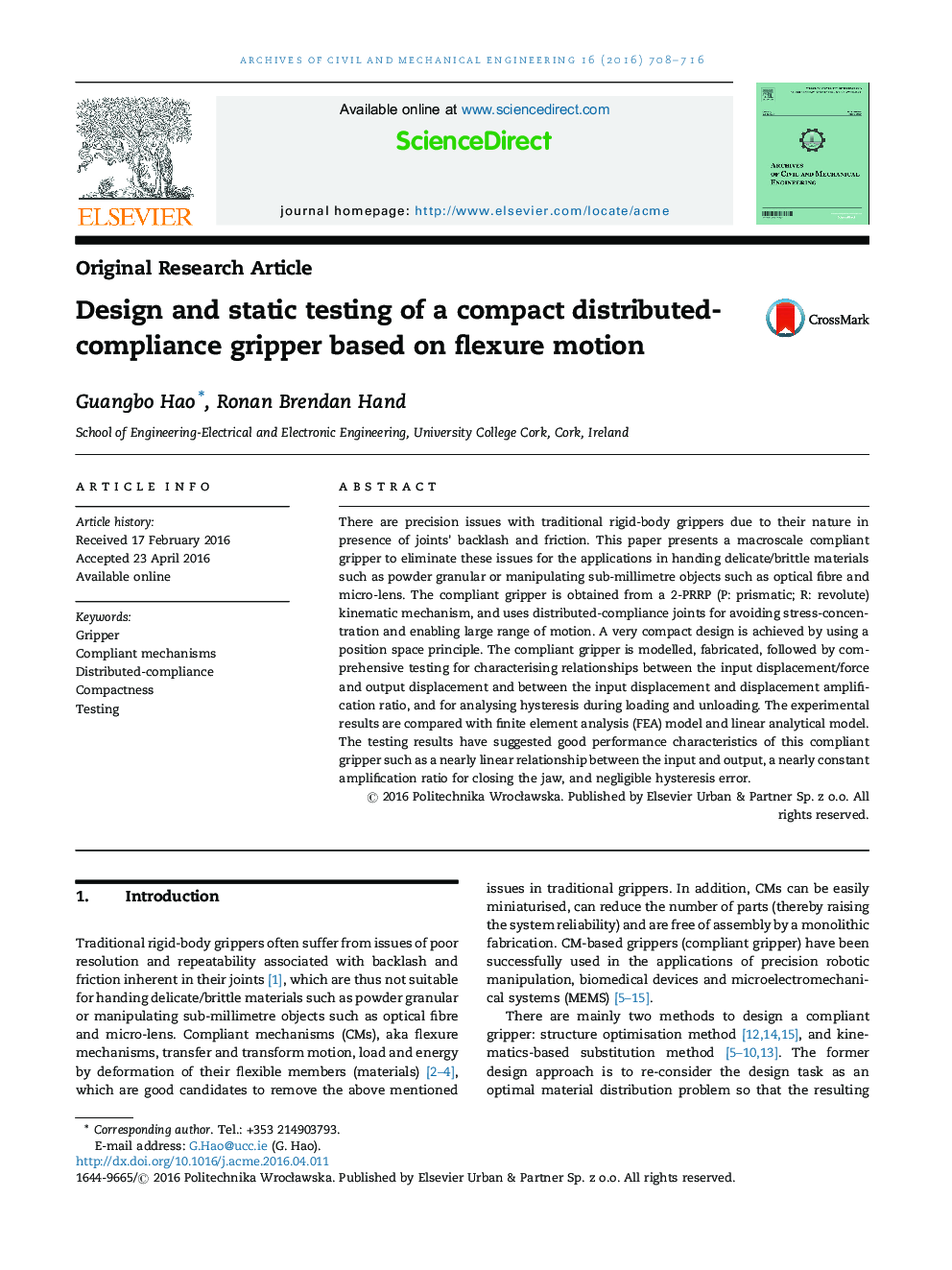| Article ID | Journal | Published Year | Pages | File Type |
|---|---|---|---|---|
| 245504 | Archives of Civil and Mechanical Engineering | 2016 | 9 Pages |
There are precision issues with traditional rigid-body grippers due to their nature in presence of joints’ backlash and friction. This paper presents a macroscale compliant gripper to eliminate these issues for the applications in handing delicate/brittle materials such as powder granular or manipulating sub-millimetre objects such as optical fibre and micro-lens. The compliant gripper is obtained from a 2-PRRP (P: prismatic; R: revolute) kinematic mechanism, and uses distributed-compliance joints for avoiding stress-concentration and enabling large range of motion. A very compact design is achieved by using a position space principle. The compliant gripper is modelled, fabricated, followed by comprehensive testing for characterising relationships between the input displacement/force and output displacement and between the input displacement and displacement amplification ratio, and for analysing hysteresis during loading and unloading. The experimental results are compared with finite element analysis (FEA) model and linear analytical model. The testing results have suggested good performance characteristics of this compliant gripper such as a nearly linear relationship between the input and output, a nearly constant amplification ratio for closing the jaw, and negligible hysteresis error.
